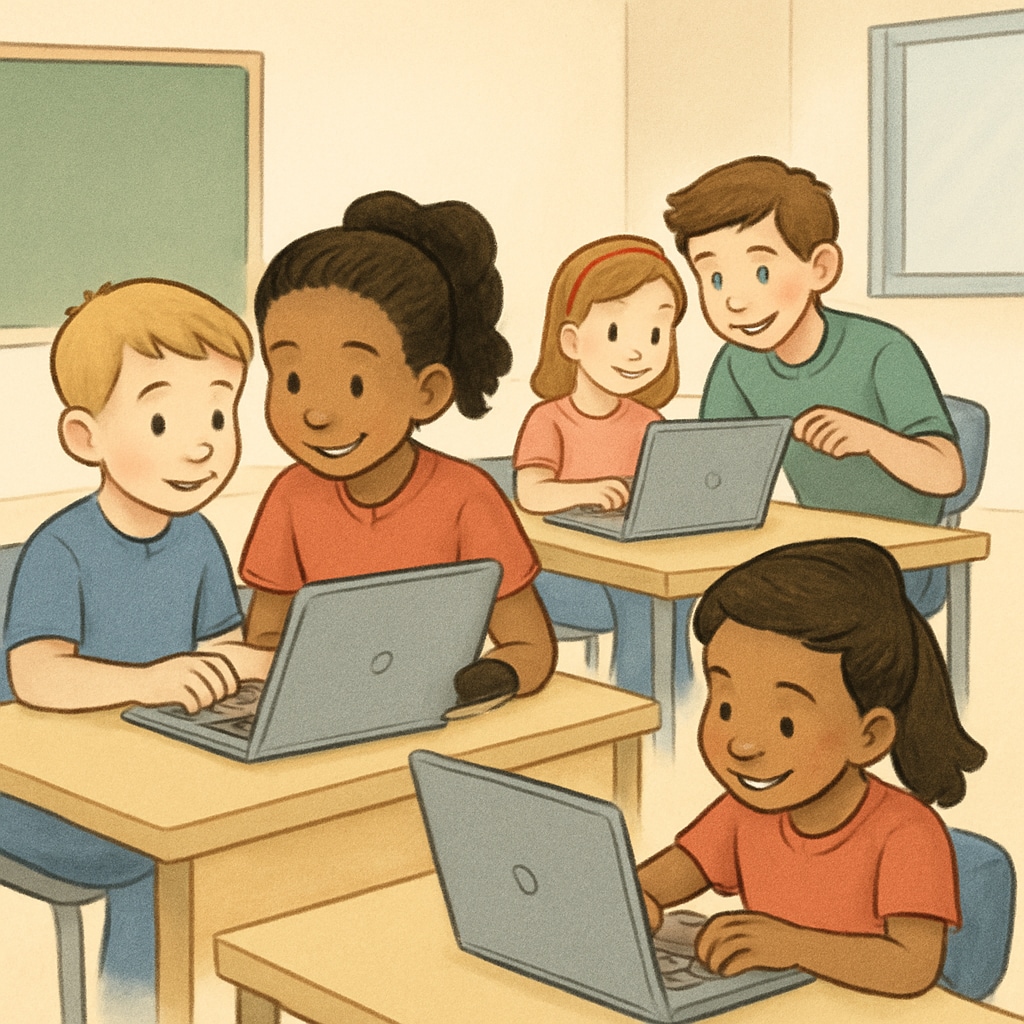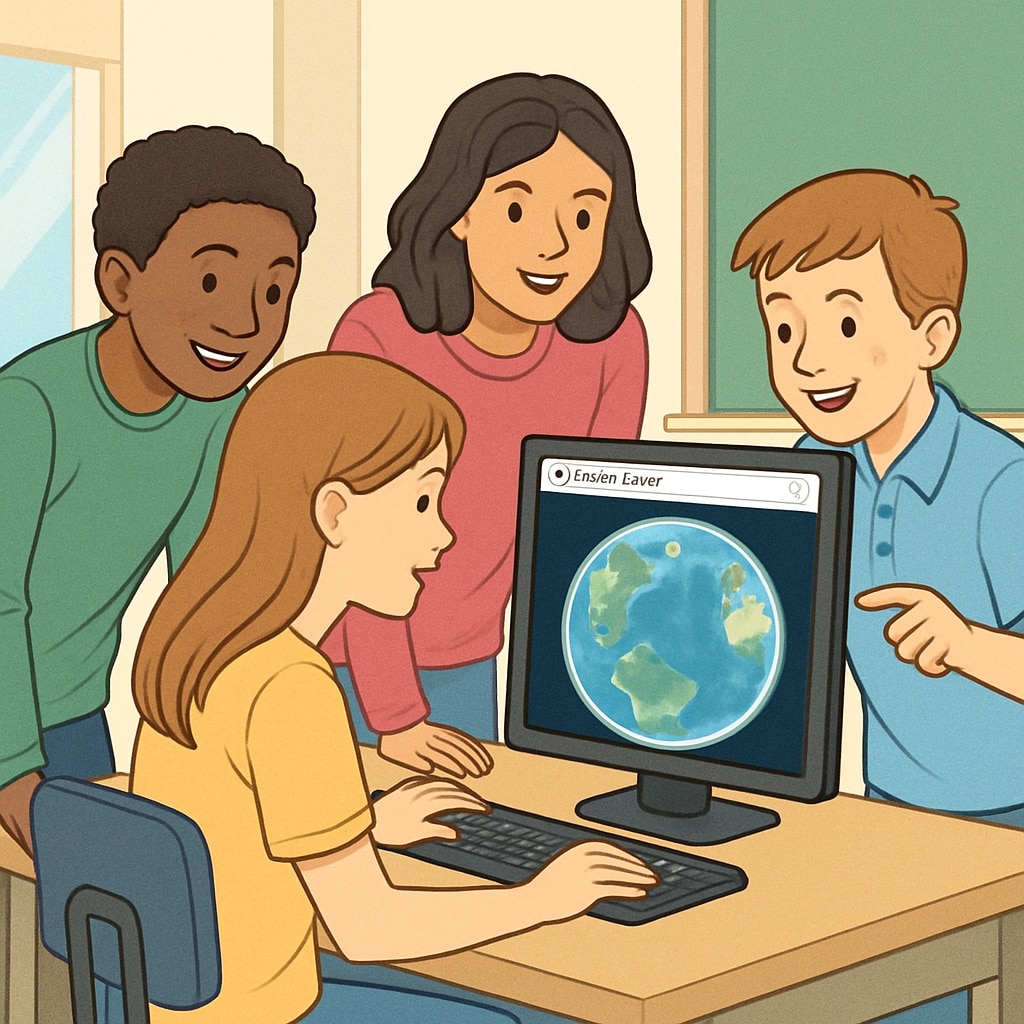The concept of cross-age learning bridges the gap between different age groups, giving young learners and older students opportunities to collaborate, learn, and grow together. Programs such as those connecting kindergarten and fourth-grade students offer immense educational value by blending playful curiosity with more developed cognitive skills. This article outlines six computer-based activities to foster teamwork, enhance digital literacy, and create meaningful connections between age groups. These activities are designed to be structured yet flexible, allowing both younger and older students to contribute independently to shared goals.
Why Cross-Age Learning Benefits Both Kindergartners and Fourth Graders
Cross-age activities provide unique benefits to both younger and older participants. For kindergartners, interacting with older students offers social and emotional development through mentorship and guidance. They gain exposure to more advanced concepts and build confidence in collaborative settings. Meanwhile, fourth graders enhance their leadership skills, patience, and empathy by stepping into the role of mentors. Research from Britannica on peer teaching supports the mutual benefits of such interactions.
Additionally, integrating technology-based tasks amplifies these advantages by introducing real-world digital literacy skills. From basic computer navigation to creative problem-solving, both age groups benefit from exposure to structured, tech-driven education.

Six Computer-Based Activities for Cross-Age Learning
To ensure successful collaboration between kindergarten and fourth-grade students, activities must be engaging, age-appropriate, and scalable. Below are six ideas that promote teamwork while building computer skills:
- Digital Drawing: Fourth graders assist kindergartners in using simple drawing tools like Microsoft Paint or Tux Paint to create collaborative art projects.
- Interactive Story Creation: Students work together to create digital stories using platforms like StoryJumper.
- Basic Coding Challenges: Introduce tools like Scratch Jr. for kindergartners while fourth graders help debug and expand code.
- Photo Editing Fun: Pair students to take photos and use free editing tools to enhance their images, promoting creativity and tech skills.
- Educational Games: Use websites such as ABCmouse or Prodigy Math, pairing older students as guides to assist younger learners.
- Virtual Field Trips: Explore online resources such as Google Earth, allowing fourth graders to lead kindergartners on digital journeys.
These activities are flexible and allow younger students to explore at their own pace while benefiting from the guidance of their older peers. For more inspiration, explore collaborative learning resources on Wikipedia.

Implementing Cross-Age Learning Programs
Introducing cross-age learning programs into your classroom requires thoughtful planning and execution. Here are some tips:
- Pairing Students Strategically: Match students based on complementary skills and personalities to encourage positive interactions.
- Setting Clear Goals: Define the purpose of each activity and set achievable milestones for both groups.
- Providing Guidance: Teachers should facilitate and monitor interactions to ensure productive collaboration.
- Balancing Structure and Flexibility: Offer a framework for tasks while allowing space for creativity and independent problem-solving.
By implementing these strategies, educators can create a harmonious learning environment that allows students to thrive in cross-age interactions.
Fostering Lifelong Skills Through Cross-Age Education
Programs combining kindergarten and fourth-grade students serve as a microcosm of real-world collaboration. They foster critical skills such as communication, teamwork, and adaptability. Moreover, these activities lay the foundation for lifelong learning habits, instilling confidence in using technology and collaborating effectively.
Cross-age learning programs prove that education transcends age boundaries, creating opportunities for shared growth and mutual mentorship. With thoughtful planning and engaging activities, educators can inspire students to connect, learn, and succeed together.
Readability guidance: Use short paragraphs and bullet lists to summarize key points. Incorporate transition words to ensure smooth flow and avoid long sentences or excessive passive voice. Place images strategically to enhance engagement.


